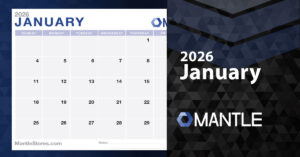Understanding Sales Data
Sales data represents the lifeblood of your game store’s analytics. It’s not just about the total sales figure at the end of the day; it encompasses a wealth of information. By breaking down sales data, you can discern which games, consoles, and accessories are the top sellers, the times and seasons these items sell best, and the revenue each product contributes to your store. This granular view goes beyond the numbers—it offers a narrative about what your customers prefer and how their choices fluctuate over time.
The Why: Sales Data is a Major Key to Success
Why prioritize sales data? Because it’s the most direct feedback mechanism you have on market preferences and trends. Sales data reflects the pulse of your market – showing you the rising stars in your inventory and the lack luster underperformers. It acts as a barometer of your store’s financial health, indicating not just profitability but also pointing towards effective pricing strategies and consumer demand. Looking at times of day, which days, what events products or services are selling help determine if it is worth the effort of selling, marketing, and giving these products the time you have been giving to them. A business should focus on the least amount of times it needs to handle a product from ordering to sale. Every time it’s needed to be moved or remarketed, there is an additional cost to that product. Sales data will help determine which of your products are profitable or secretly costing you more money then you may realize. Space that these products are using are another form of cost. The space of a product that is taking up is forcing you to not have another product in that space and if that product isn’t selling, that space is still costing you electricity, insurance, staff labor to dust, and temperature controlling. Having a product sit dead is almost worse than no product at all.
Actionable Insights
Trend Spotting: By analyzing sales data over different time frames, you can spot emerging trends. For example, if a specific genre of games is consistently selling during a certain time of the year, it’s a signal to stock more titles from that genre during that time of the year. Types of games that customers want during specific times of the year is a key to success and allows planning and budgeting around future products and sales.
Inventory Management: Align your inventory with sales trends. If certain accessories are consistently popular, ensure they are always in stock. Conversely, phase out items that show a declining sales trend to free up shelf space and capital for more in-demand products. This also should be used alongside seasonal merchandise, quarterly promotions, and once in a while over the top events. You have the data to see what you normally sell during these times, use it to your advantage. Sales data also helps in crafting targeted promotions. If certain items sell well during specific seasons or events, plan your promotions around these times. For instance, if classic games see a spike in sales during the holiday season, consider bundling them with related accessories at a special price. To help move additional products at a higher ticket price.
Pricing Decisions: Understanding which products are price sensitive can help in setting competitive prices. Sales data can reveal how price changes impact the demand for certain items, guiding you in making pricing decisions. If your customer base doesn’t tend to buy more expensive metal dice sets for their role playing games but can’t buy enough of your plastic dice, look at bringing in a different publisher of dice at a similar or higher price point.
“The goal is always to increase sales, increase your per ticket sale, and increase customer satisfaction.”
Customer Segmentation: Analyze sales data to understand different customer segments. For example, if collectors’ editions of games are popular, it indicates a segment of your customer base values exclusivity and may respond well to limited edition releases. Knowing your customers will greatly increase your chance of making these limited edition sales.
Forecasting: Use historical sales data to forecast future sales. This helps in planning for inventory, staffing, and budgeting. For instance, if historical data shows a surge in sales of multiplayer games during summer, you can prepare by stocking up on these titles in anticipation of increased demand. Knowing when you should be busy and when you should have slower foot traffic will help you manage labor costs and increase busy work for staff such as cleaning or preparing the store for an upcoming event.
Conclusion
In essence, sales data is not just about tallying transactions; it’s about understanding the story behind each sale. It’s a tool for strategic decision-making, enabling you to tune your business to the needs of your customers’ preferences. By harnessing the power of sales data, you’re not just selling games; you’re positioning your store to meet the ever-changing demands of the gaming world, which will increase sales and customer satisfaction.







